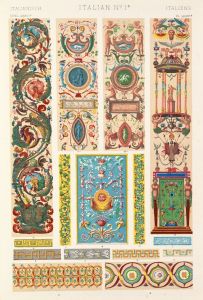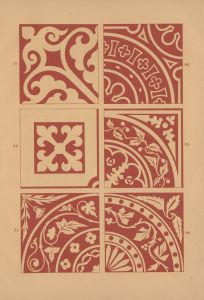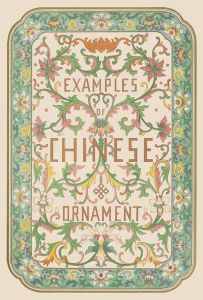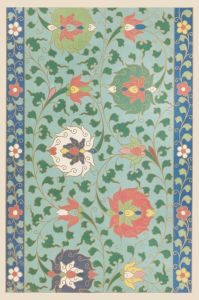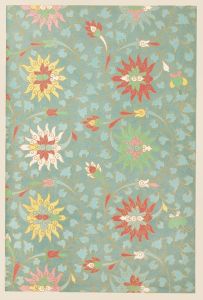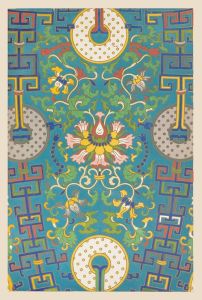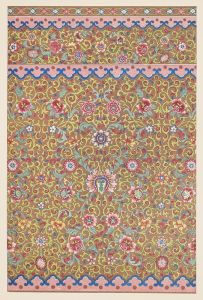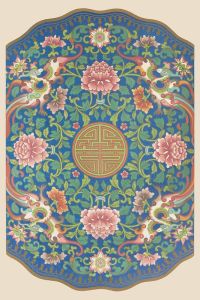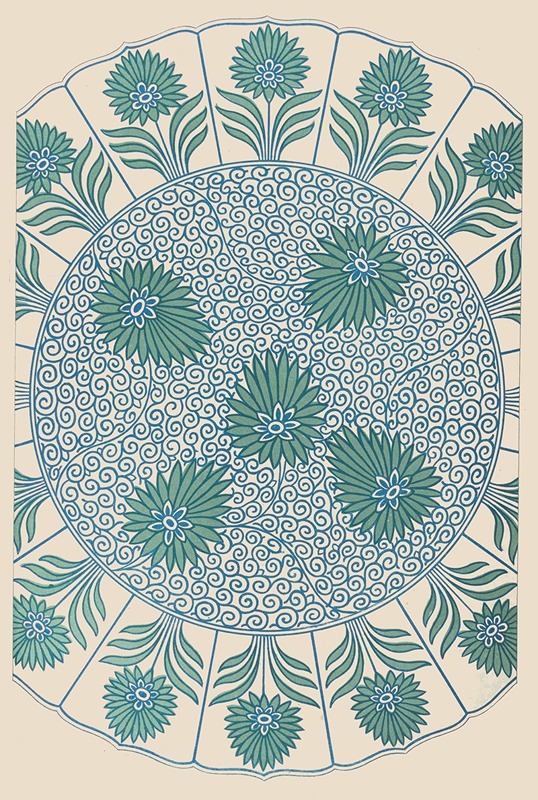
Examples of Chinese ornament, Pl.03
A hand-painted replica of Owen Jones’s masterpiece Examples of Chinese ornament, Pl.03, meticulously crafted by professional artists to capture the true essence of the original. Each piece is created with museum-quality canvas and rare mineral pigments, carefully painted by experienced artists with delicate brushstrokes and rich, layered colors to perfectly recreate the texture of the original artwork. Unlike machine-printed reproductions, this hand-painted version brings the painting to life, infused with the artist’s emotions and skill in every stroke. Whether for personal collection or home decoration, it instantly elevates the artistic atmosphere of any space.
"Examples of Chinese Ornament, Pl.03" is a plate from the influential design book "The Grammar of Ornament" by Owen Jones, first published in 1856. Owen Jones was a British architect and designer known for his work in color theory and his contributions to the decorative arts. His book, "The Grammar of Ornament," is a comprehensive collection of design patterns and motifs from various cultures around the world, intended to serve as a resource and inspiration for designers and artists.
Plate 03, specifically focusing on Chinese ornamentation, is part of a broader section dedicated to Chinese design elements. Jones was fascinated by the rich history and intricate designs found in Chinese art and sought to capture the essence of these elements in his work. The plate showcases a variety of patterns and motifs that are characteristic of traditional Chinese decorative arts, including intricate floral patterns, geometric shapes, and stylized natural forms.
Chinese ornamentation is known for its symbolic meanings and use of motifs that often represent concepts such as prosperity, longevity, and harmony. Common elements include the use of dragons, phoenixes, and other mythical creatures, as well as floral patterns like peonies and lotuses, which hold cultural significance. The designs are typically symmetrical and balanced, reflecting the Chinese philosophical emphasis on harmony and balance.
Jones's depiction of Chinese ornamentation in "The Grammar of Ornament" was based on his studies and observations of Chinese art and artifacts available in Europe during the mid-19th century. His work was part of a broader Victorian-era fascination with the art and culture of Asia, which was often romanticized and idealized by Western audiences. Jones aimed to present these designs in a way that was both educational and inspirational, encouraging Western designers to appreciate and incorporate elements of non-Western art into their own work.
"The Grammar of Ornament" was groundbreaking in its approach to documenting and categorizing design elements from around the world. It was one of the first books to systematically present a wide array of decorative styles, and it had a significant impact on the development of design theory and practice in the 19th and early 20th centuries. The book's emphasis on the universality of design principles and the value of cross-cultural exchange remains influential in the field of design today.
Jones's work, including his depiction of Chinese ornamentation, contributed to a greater appreciation and understanding of global art traditions. It encouraged a more inclusive approach to design, where elements from different cultures could be studied, respected, and integrated into new creative expressions. "Examples of Chinese Ornament, Pl.03" thus represents not only a specific artistic style but also a moment in history when the exchange of artistic ideas across cultures was becoming increasingly recognized and valued.





